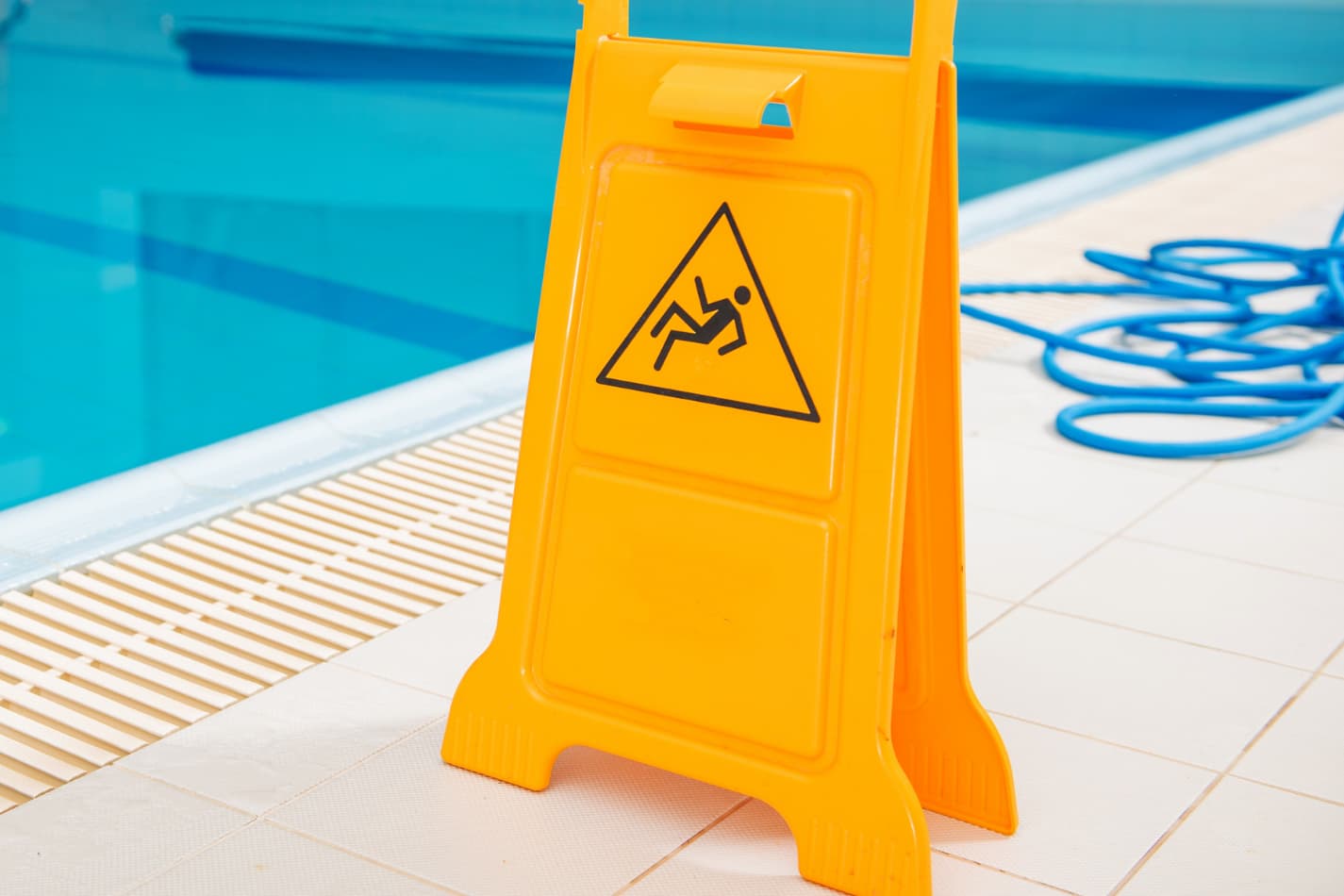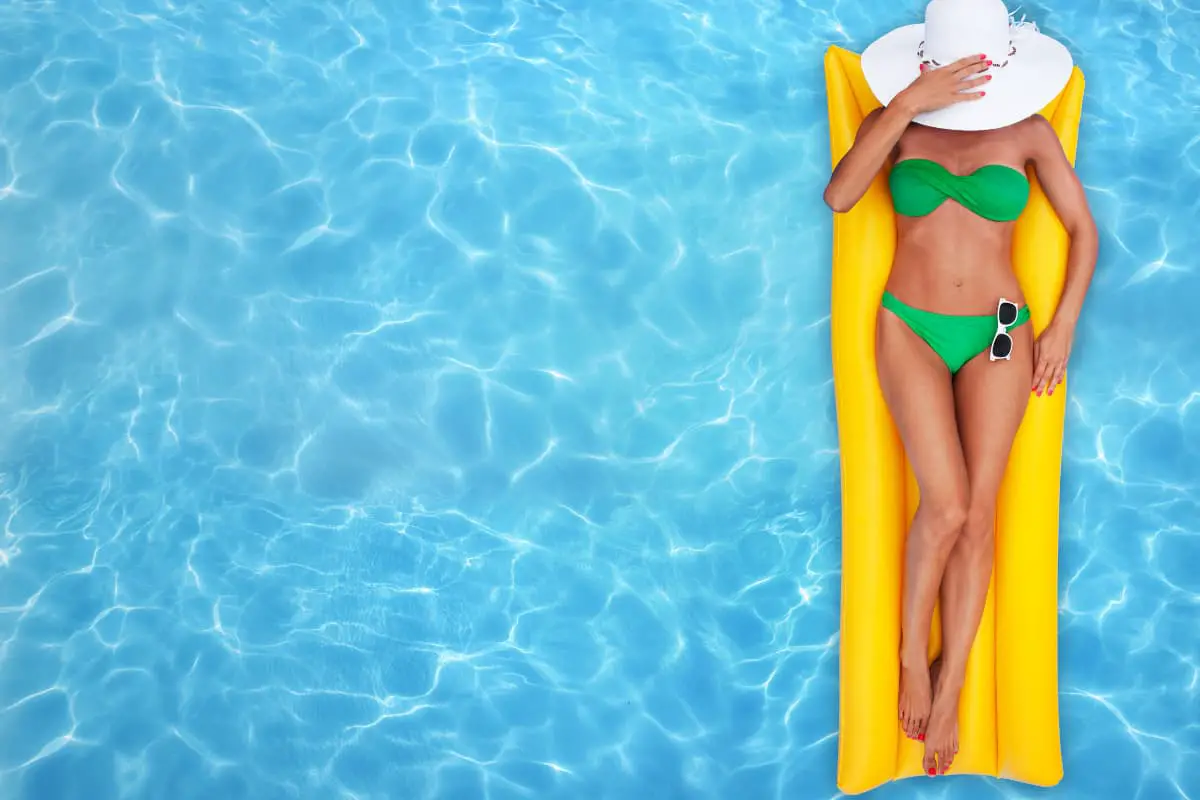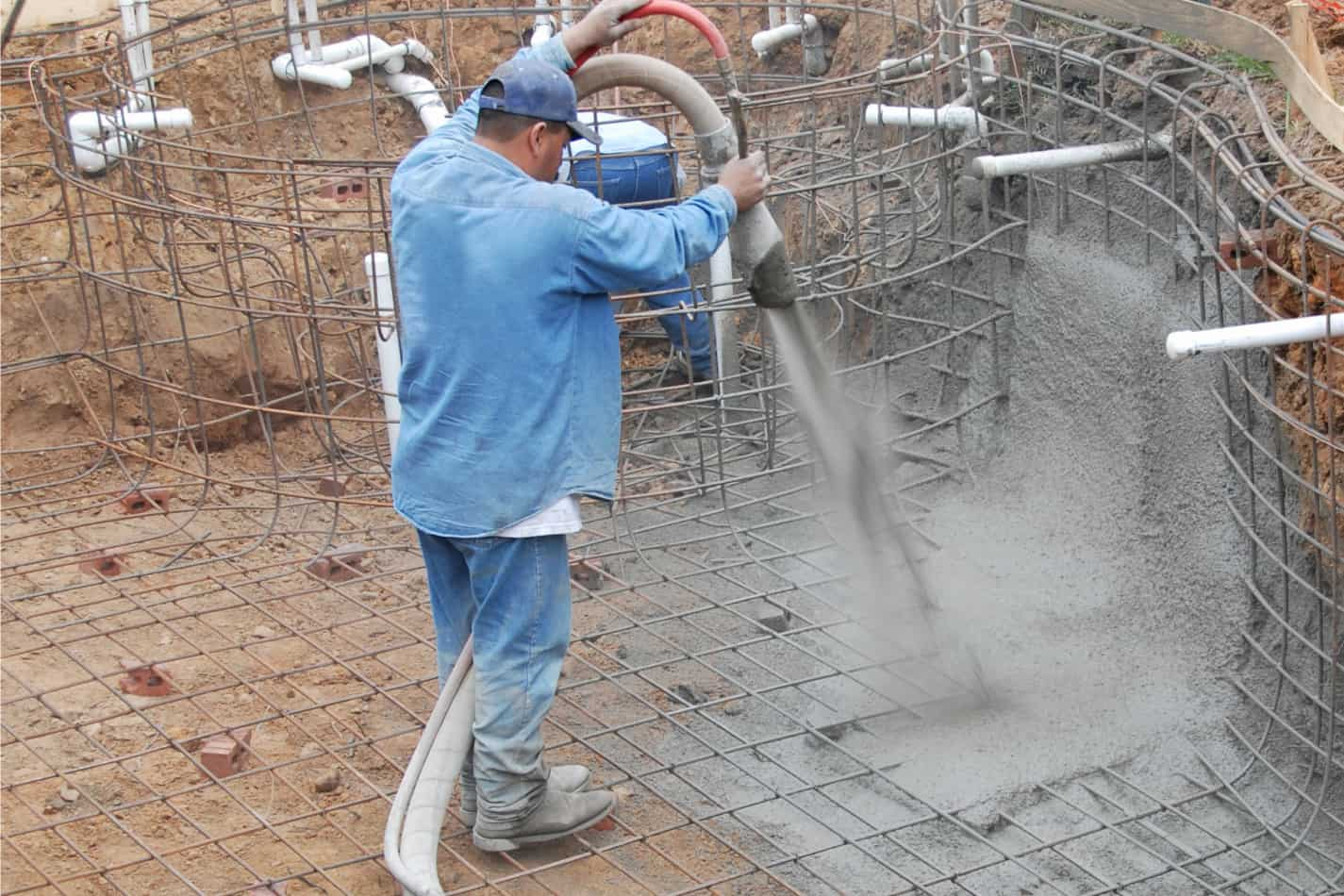Why Fiberglass Pool Steps Are Slippery (and 2 Quick Fixes)

As an Amazon Associate I earn from qualifying purchases.
If you’re considering constructing a fiberglass pool, you’ll undoubtedly want to learn about the complaints that homeowners have so you can decide if it’s good for you.
Even minor nuances, which may not seem important at first, might become annoyances when you consider the amount of money you’ve spent in a pool.
One of the most common complaints we hear is about the slick surface of a fiberglass pool. The truth is that this material can be so slick that pool users can slip and fall. This can be a serious issue on pool steps, where a slip-and-fall mishap can be fatal.
If you’re wondering why fiberglass pool steps are slippery and how you can fix them, then this article is a treat for you. Read on to learn more.

Are fiberglass pools slippery?
Yes! The slippery nature of fiberglass pools is one of its most significant drawbacks.
The major slippery characteristic of the pool and its steps is due to the slickness of the fiberglass material. The end outcome of this can be quite dangerous for pool users.
Fiberglass filaments have a high weight-to-surface ratio and have evolved flexibly due to their manufacturing process.
Furthermore, when molten glass is spun into fibers, each strand can bend or flex to whatever weight or size it carries.
How to make fiberglass pool steps less slippery (02 quick fixes)
You can buy some grip strips to place on the fiberglass steps. It could be similar to the ones that disabled people use in bathtubs to keep them from slipping.
The chemical Concepts H2O Slip Grip underwater treads work well in vinyl, fiberglass, and concrete pools and on vinyl and fiberglass pool steps.
Slip Grips are employed mainly for underwater use; the non-slip treads bolster safety and provide a non-slip footing, especially in slippery spots.
You can also attach these underwater using H2O AquaBonder Glue (available separately or in starter kits), so there is no need to drain your pool!
H2O Glue Slip Grip Profile
23.875″ in length, 2″ wide, 0.065″ thick, Slip-resistant fiberglass make-up. Black and Yellow are standard colors; however, other colors can be requested. A fine grit texture is applied to the fiberglass strips.
H2O Glue Slip Grip Kit Contents:
Two colors (black, blue, yellow, or white) 23.875″ in length, 2 inches wicked, 0.065″ thick Slip Grip Strips. One H2O Glue 50ml underwater adhesive cartridge, Four H2O Glue Mixing Nozzles, and (1) Caulk Gun Adapter for easy dispensing (DK117).
Installation procedures
- Using a hack saw or equivalent tool, cut the slippery grip strip to the required length (32 teeth per inch blades work best). Sand the cut edge lightly.
- Remove any algae or other residue from the pool surface with a scouring pad—this aids in ensuring a tight application.
- Apply H2O slip Glue Underwater Adhesive on the strip’s backside (follow the H2O glue application instructions).
- Place the slip grip strip in its proper place. If accomplished underwater, simply wipes away extra glue with a cloth. Otherwise, extra adhesive can be removed using alcohol or acetone.
- To establish a strong grasp, place a weight (such as a brick or hefty stone) on the slip grip treads for 10 minutes. Then take out the weights.
The Trouble Free Pool Care (TFPC) method
This method typically works for slippery fiberglass pools or steps resulting from contamination with abnormal quantities of chemicals and algae.
The TFPC method is nothing more than simply knowing how to test your water yourself, knowing what the pool chemicals sold in stores are and what they do. Knowing exactly what your pool requires to stay clean and sanitary is very important.
We also believe that a pool’s daily free chlorine (FC) target should be higher than the threshold required to kill algae and pathogens and that your stabilizer level determines the optimum FC value.
This is in contrast to the industry-taught guideline that all you need for clean and clear water is 1-3ppm FC (research has proven that to be untrue).
So here’s what you can do – Get a proper test kit and learn how to use it to measure your water parameters yourself. Commit to testing your water at least once per day during the swim season so that you can learn how your pool reacts to the chlorine you add.
Add chlorine to your pool to maintain the proper FC/CYA ratio, which entails first checking and dosing your water every day. Brush, vacuum, and keep your pool clean to your satisfaction and your equipment in good operating order.
For many people, the above tasks take maybe 5-15 minutes per day (usually the time it takes to go outside with a cup of coffee in the morning and figure out what the pool needs) and then maybe another 30 on the weekend to do a full set of tests.
Once you’ve figured out how your pool consumes chlorine over a few days or weeks, testing can be reduced to simple pH/FC/CC testing a few times per week rather than every day.
Unless your pool has a large algal outbreak (which is unlikely if you take care of it regularly) or a severe equipment problem, maintenance is simply maintaining the pool clean to your taste.
We hope you will commit to TFP for the next season since once you get past the initial learning curve, your pool will be easy and cheap to maintain, very cheap to run in terms of chemicals, and its slickness will be much reduced.
5 Other common problems with fiberglass pools and how to fix them.
- Some colored gel coats have mismatched fixes (solution: solid-color gel coats)
- In the gelcoat, there are spider cracks (solution: a great manufacturer and installer)
- The pool’s walls are bulging (solution: gravel backfill)
- Discoloration and fading (solution: Cross-Lynx Composite Technology and proper pool maintenance)
- Water leaks due to a plumbing settlement (solution: gravel backfill and The River Pools Way).
Conclusion
To conclude, fiberglass pools and steps can be exceedingly slippery. Notwithstanding, if you take proper care of your pool and follow the quick fixes discussed above, you should not have any issues with slipperiness.
If not, brace yourself for a backyard version of Disney’s swimmers on ice.
Thanks for reading to the end. And as always we wish you the very best!


